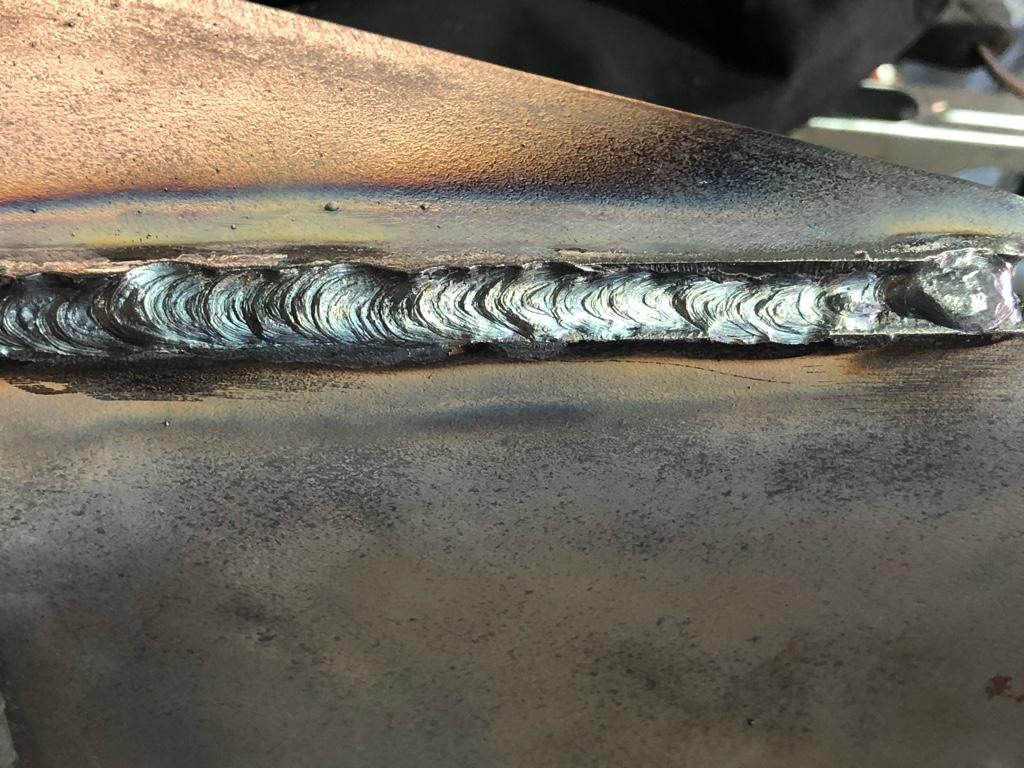Best Overview to Preventing Weld Undercut: Tips and Techniques
Best Overview to Preventing Weld Undercut: Tips and Techniques
Blog Article
Understanding the Causes and Solutions for Undercut Welding in Steel Manufacture Processes
In the realm of steel fabrication processes, the occurrence of undercut welding presents a significant difficulty that requires an extensive understanding of its causes and sensible options. The detailed interplay of different elements throughout welding procedures can bring about this unfavorable sensation, impacting the architectural honesty and total top quality of the welded joints - Preventing weld undercut. By dissecting the source of undercut welding and exploring reliable therapeutic actions, fabricators can boost the criterion of their workmanship and make sure the production of perfect steel elements
Common Reasons For Undercut Welding
Regularly forgotten in steel fabrication, undercut welding occurs as a result of various elements that require meticulous interest and know-how to be successfully mitigated. One usual reason for undercut welding is excessive heat input. When the warmth input is also high, it can result in the melting and subsequent disintegration of the base product along the edges of the weld joint, producing a groove or undercut. Furthermore, incorrect welding techniques, such as using the wrong welding angle or take a trip speed, can also add to damage formation. Inadequate protecting gas insurance coverage is another crucial aspect that can cause undercutting. Insufficient gas protection fails to protect the weld pool properly, resulting in oxidation and undercut flaws. Furthermore, the choice of welding criteria, such as voltage, present, and cable feed speed, plays a significant function in the occurrence of undercut welding. Recognizing these usual causes is vital for applying preventative actions and making certain top notch welds in steel fabrication processes.
Influence of Incorrect Welding Parameters
Imprecise welding criteria can dramatically jeopardize the integrity and quality of welded joints in metal fabrication processes. The impact of inaccurate welding criteria shows up in numerous methods, leading to structural weaknesses and issues in the bonded elements. Precise attention to welding parameters is paramount to make sure the production of premium welds with the desired mechanical buildings and architectural honesty.
Impact of Improper Lantern Angle
Incorrect torch angle in welding operations can significantly impact the high quality and honesty of the last weld joints in metal construction processes. Undercutting is a typical welding flaw where a groove creates along the weld toe, damaging the joint and jeopardizing its structural honesty.
A lantern angle that is as well high can lead to insufficient penetration, incomplete blend, and enhanced spatter. On the other hand, a lantern angle that is also superficial can lead to extreme penetration, burn-through, and distortion of the base product. Preventing weld undercut. Correct torch angle is crucial for making sure constant weld high quality, stamina, and appearance
To stop damaging and other defects caused by incorrect torch angles, welders must be trained to keep the right torch angle throughout the welding procedure. Routine surveillance and modification of lantern angles throughout welding can aid accomplish sound welds with minimal defects.
Duty of Inadequate Welding Strategies

An additional facet of insufficient welding methods is improper weld prep work. Inadequate cleaning of the base metals, wrong joint style, or not enough edge prep work can all add to undercut welding. Poor shielding gas coverage or using the wrong type of gas can result in incomplete combination and the formation of undercut issues.
To attend to the duty of poor welding methods in steel manufacture procedures, it is important to give thorough training for welders. Appropriate education on welding parameters, joint prep work, and shielding gas selection can assist protect against undercut welding and make sure premium welds in steel fabrication tasks.
Effective Solutions for Undercut Welding
Resolving undercut welding in steel fabrication requires carrying out reliable options to boost weld quality and architectural stability. One of the main solutions to fight undercut is to readjust welding specifications such as voltage, current, and take a trip rate to make sure appropriate warmth her latest blog input and combination. By fine-tuning these setups, welders can protect against excessive melting of the base steel and filler material, reducing the probability of undercut development.
Furthermore, appropriate joint preparation is critical in avoiding undercut. Making sure tidy base steel surface areas without impurities and utilizing the ideal bevel angle can assist promote much better weld infiltration and reduce the risk look at here now of undercut - Preventing weld undercut. Using ideal welding strategies, such as weaving or oscillating the torch, can likewise aid in distributing warmth uniformly and loading the weld joint adequately, lessening the opportunity of undercut problems
Additionally, selecting the correct welding consumables, consisting of electrodes and filler steels, is important in reducing undercut. Utilizing products with appropriate chemical structures and mechanical residential properties can add to attaining audio welds with minimal undercut. Regular examination and high quality control actions should also be implemented to identify and resolve undercut issues without delay, ensuring the total stability of made metal elements.

Verdict
Finally, comprehending the reasons and options for undercut welding in steel manufacture procedures is vital for attaining top notch welds. By addressing common causes such as wrong welding parameters, incorrect lantern angle, and poor welding techniques, welders can avoid undercutting and ensure solid, sturdy welds. It is necessary to take note of these variables and execute effective remedies to boost the overall welding process and end product quality.

Report this page